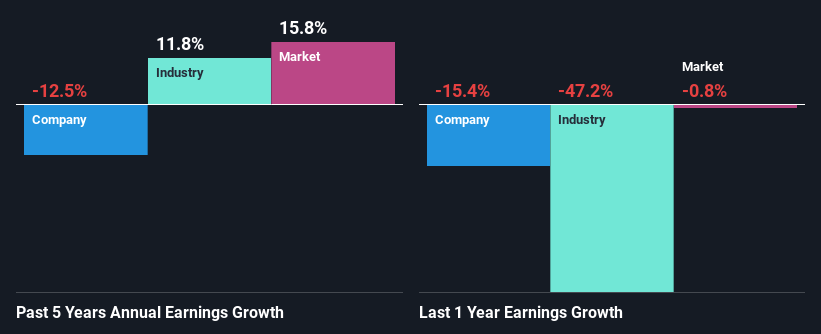Cedar Woods Properties’ (ASX:CWP) stock is up by 8.6% over the past three months. However, its weak financial performance indicators makes us a bit doubtful if that trend could continue. Specifically, we decided to study Cedar Woods Properties’ ROE in this article.
Return on equity or ROE is an important factor to be considered by a shareholder because it tells them how effectively their capital is being reinvested. Simply put, it is used to assess the profitability of a company in relation to its equity capital.
View our latest analysis for Cedar Woods Properties
How To Calculate Return On Equity?
The formula for return on equity is:
Return on Equity = Net Profit (from continuing operations) ÷ Shareholders’ Equity
So, based on the above formula, the ROE for Cedar Woods Properties is:
7.3% = AU$32m ÷ AU$431m (Based on the trailing twelve months to June 2023).
The ‘return’ is the yearly profit. Another way to think of that is that for every A$1 worth of equity, the company was able to earn A$0.07 in profit.
What Is The Relationship Between ROE And Earnings Growth?
So far, we’ve learned that ROE is a measure of a company’s profitability. We now need to evaluate how much profit the company reinvests or “retains” for future growth which then gives us an idea about the growth potential of the company. Generally speaking, other things being equal, firms with a high return on equity and profit retention, have a higher growth rate than firms that don’t share these attributes.
A Side By Side comparison of Cedar Woods Properties’ Earnings Growth And 7.3% ROE
When you first look at it, Cedar Woods Properties’ ROE doesn’t look that attractive. However, its ROE is similar to the industry average of 7.3%, so we won’t completely dismiss the company. But then again, Cedar Woods Properties’ five year net income shrunk at a rate of 13%. Remember, the company’s ROE is a bit low to begin with. So that’s what might be causing earnings growth to shrink.
However, when we compared Cedar Woods Properties’ growth with the industry we found that while the company’s earnings have been shrinking, the industry has seen an earnings growth of 12% in the same period. This is quite worrisome.


Earnings growth is an important metric to consider when valuing a stock. The investor should try to establish if the expected growth or decline in earnings, whichever the case may be, is priced in. By doing so, they will have an idea if the stock is headed into clear blue waters or if swampy waters await. If you’re wondering about Cedar Woods Properties”s valuation, check out this gauge of its price-to-earnings ratio, as compared to its industry.
Is Cedar Woods Properties Making Efficient Use Of Its Profits?
Cedar Woods Properties has a high three-year median payout ratio of 65% (that is, it is retaining 35% of its profits). This suggests that the company is paying most of its profits as dividends to its shareholders. This goes some way in explaining why its earnings have been shrinking. The business is only left with a small pool of capital to reinvest – A vicious cycle that doesn’t benefit the company in the long-run. Our risks dashboard should have the 2 risks we have identified for Cedar Woods Properties.
Moreover, Cedar Woods Properties has been paying dividends for at least ten years or more suggesting that management must have perceived that the shareholders prefer dividends over earnings growth. Upon studying the latest analysts’ consensus data, we found that the company is expected to keep paying out approximately 55% of its profits over the next three years. Still, forecasts suggest that Cedar Woods Properties’ future ROE will rise to 9.9% even though the the company’s payout ratio is not expected to change by much.
Conclusion
Overall, we would be extremely cautious before making any decision on Cedar Woods Properties. Because the company is not reinvesting much into the business, and given the low ROE, it’s not surprising to see the lack or absence of growth in its earnings. With that said, we studied the latest analyst forecasts and found that while the company has shrunk its earnings in the past, analysts expect its earnings to grow in the future. To know more about the latest analysts predictions for the company, check out this visualization of analyst forecasts for the company.
Have feedback on this article? Concerned about the content? Get in touch with us directly. Alternatively, email editorial-team (at) simplywallst.com.
This article by Simply Wall St is general in nature. We provide commentary based on historical data and analyst forecasts only using an unbiased methodology and our articles are not intended to be financial advice. It does not constitute a recommendation to buy or sell any stock, and does not take account of your objectives, or your financial situation. We aim to bring you long-term focused analysis driven by fundamental data. Note that our analysis may not factor in the latest price-sensitive company announcements or qualitative material. Simply Wall St has no position in any stocks mentioned.
















